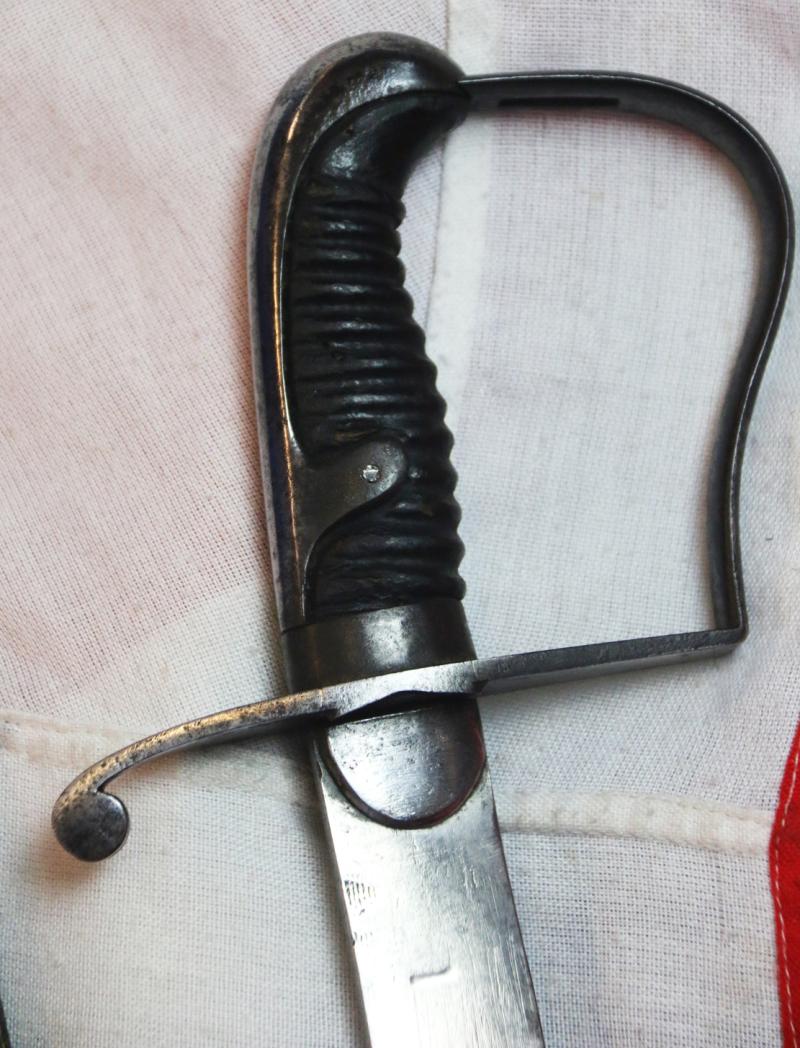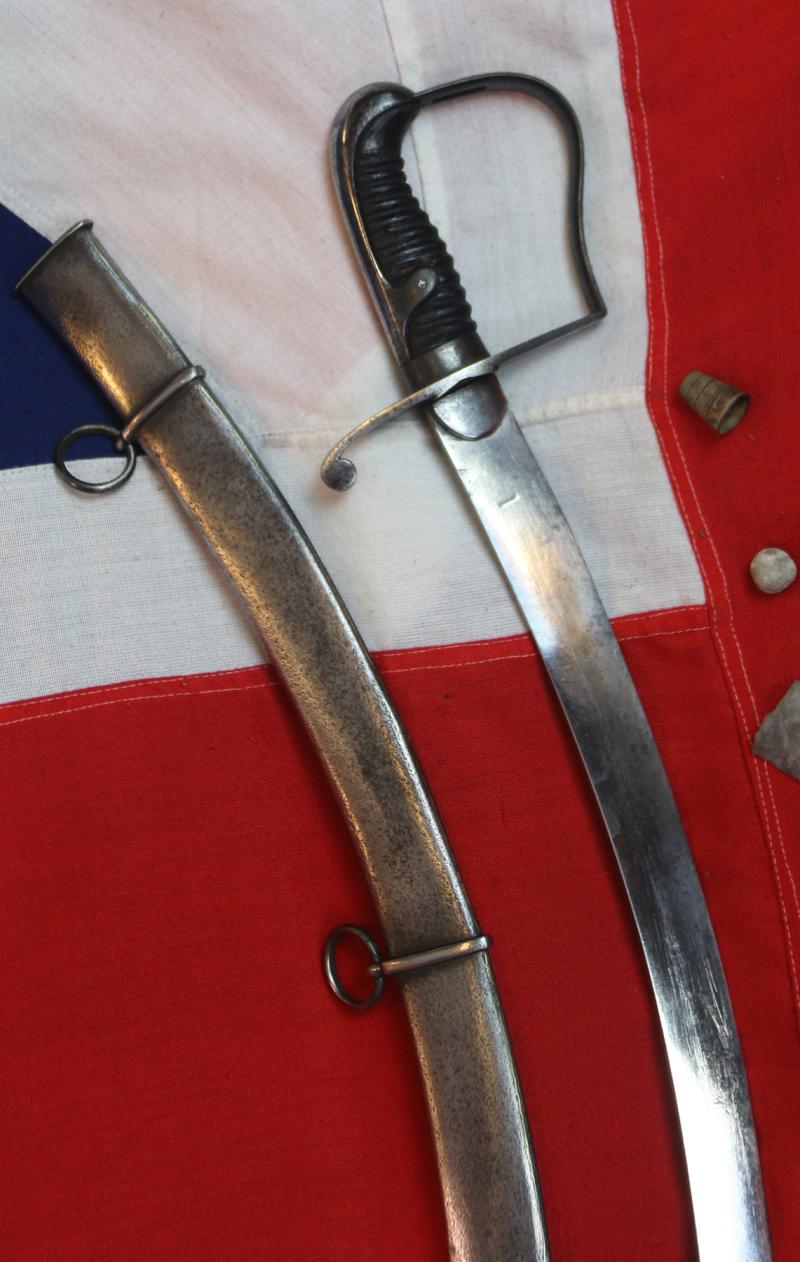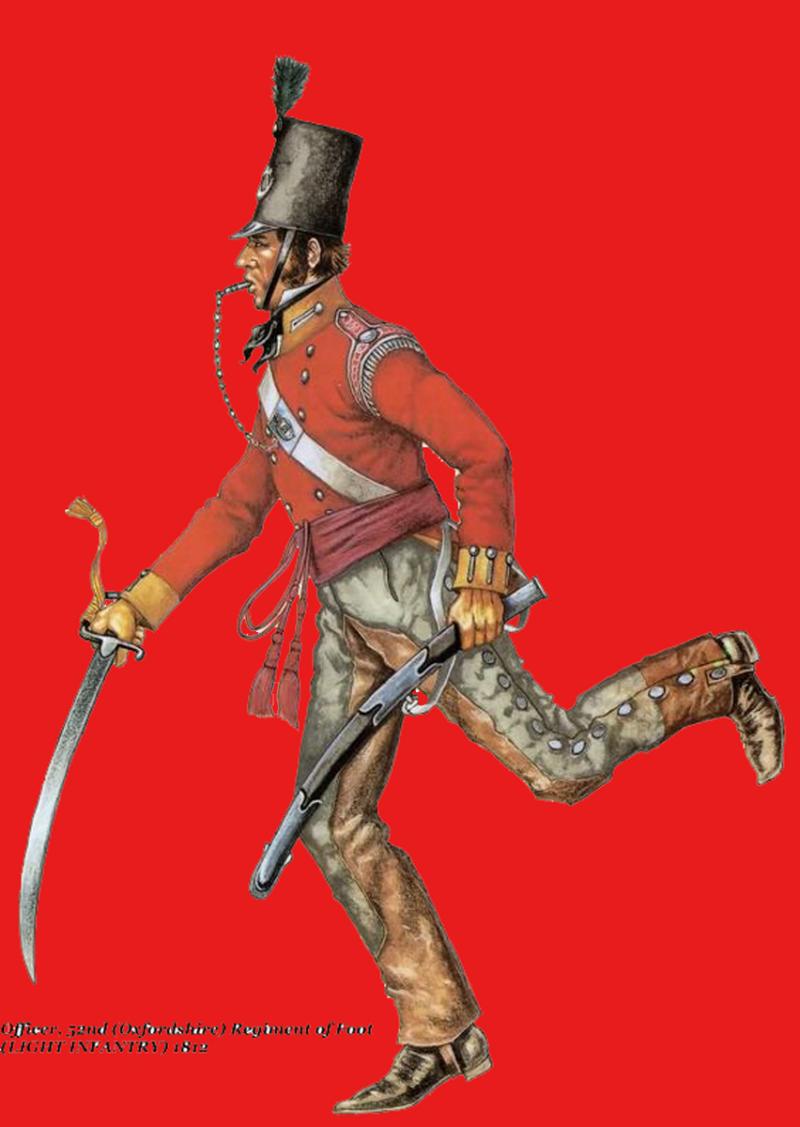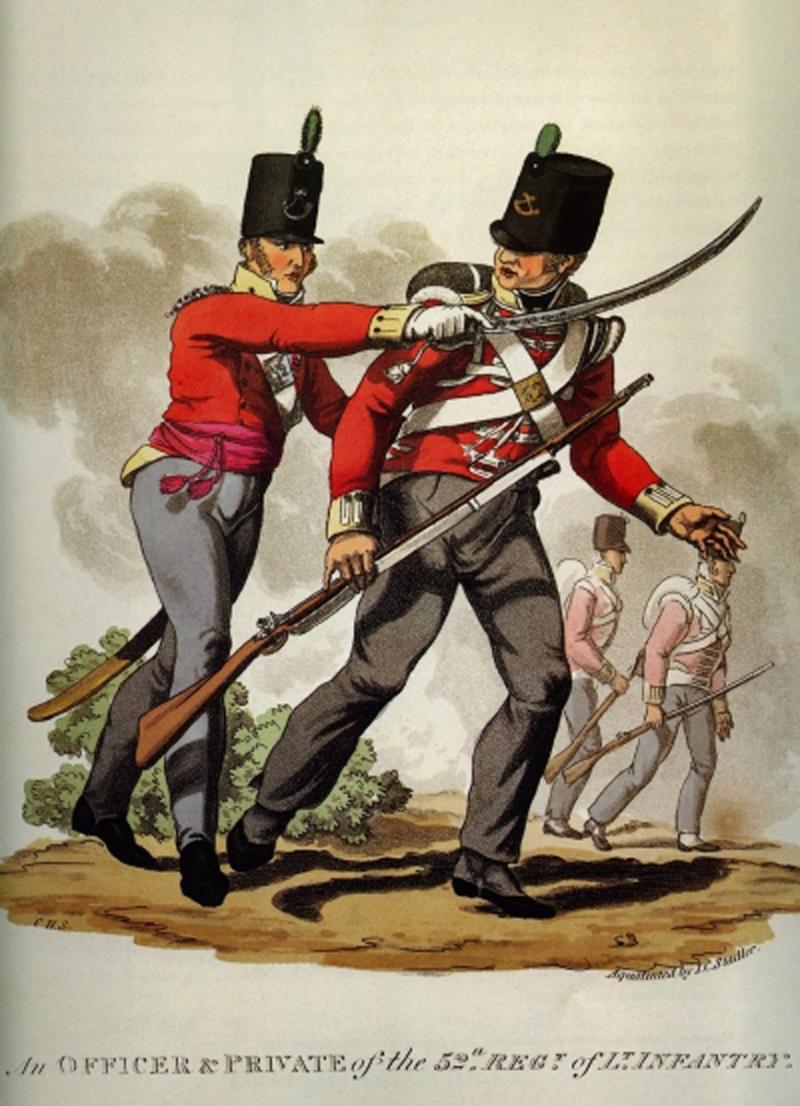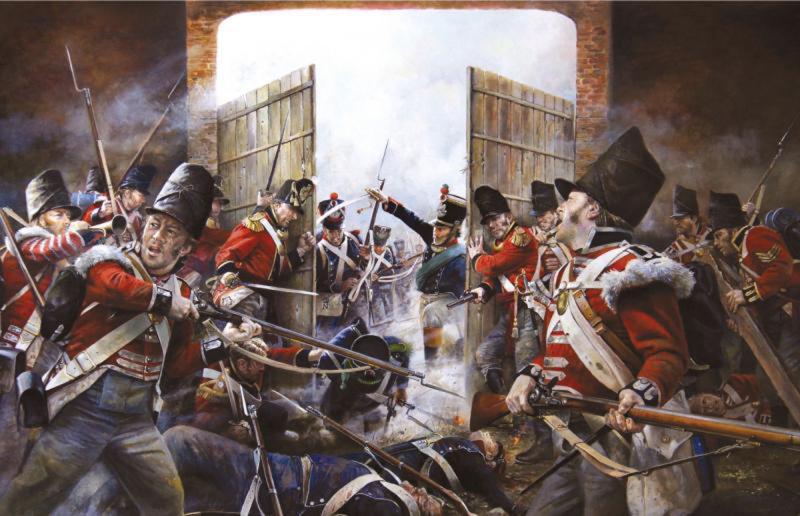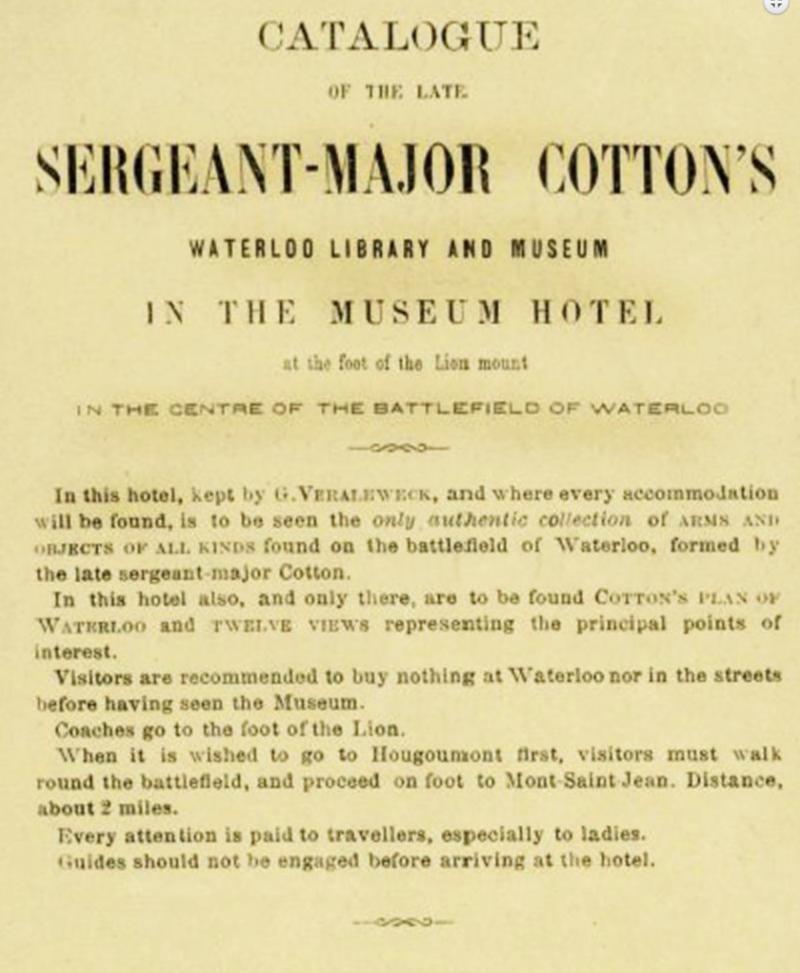A Superb British 1796 Light Infantry, Rifle's Company Officer's Sword, From Edward Cotton's Hotel Du Musee Waterloo Collection
A Light Infantry Company Officer's sword, in its original all steel combat scabbard, used by an officer in such as the 52nd Foot, the Oxfordshire Light Infantry, or, the 95th Rifles Regiment at Waterloo. A design based on the 1796 Light Dragoon deeply curved sabre due to its efficiency in heavy close combat. During the Peninsular War officer's assigned to the Light companies often felt they required a better sword than the thinner, straight bladed, standard 1796 infantry officer's sword that was the prevalent choice at the time. Thus many L.I. officers chose to have a sword, based on the curved blade of the hugely effective and popular 1796 light dragoon officer's sabre, and with the same form of hilt, but slightly shorter due to its use on foot rather than on horseback, but a much deeper curve.
This is one of those very swords. The Light Infantry were units were employed as an addition to the common practice of fielding skirmishers in advance of the main column, who were used to weaken and disrupt the waiting enemy lines (the British also had a light company in each battalion that was trained and employed as skirmishers but these were only issued with muskets). With the advantage of the greater range and accuracy provided by the Baker rifle, British skirmishers were able to defeat their French counterparts routinely and in turn disrupt the main French force by sniping non-commissioned and commissioned officers.
The most famous regiments of Light Infantry of this era was the 60th Regiment (Royal American Rifles) that were deployed around the world, and the three battalions of the 95th Regiment that served under the Duke of Wellington between 1808 and 1814 in the Peninsular War and again in 1815 at the Battle of Waterloo. Although the 60th and 95th are more famous now other companies if Light Infantry, such as the 52nd, achieved incredible service in combat, especially at Waterloo. In regards to the 52nd we relate the end of the 3rd attack by the French Imperial Guard at Waterloo; Seeing the advance of this large column, Colonel John Colborne commanding the 52nd Foot, realised that the moment of crisis was at hand; he ordered the wounded to be left and in an audacious move, he ordered his regiment (a very strong battalion with over one thousand men in its ranks and still strengthened by a rich vein of veterans who had fought with much renown throughout the Peninsular War) to wheel up against the flank of the approaching columns. Seeing the 52nd Regiment manoeuvre to position their line parallel with the long flank of the Guard column, Major General Adam, ordered the other units of his brigade to support this movement on either flank, something that the 71st initially struggled to do, their colonel misjudging the situation and ordering his battalion to face about, a movement usually made before retiring.
Once in position the 52nd marched rapidly across the face of the slope, well below the ridge line, upon the column of Chasseurs and troops of Bachelu's and Foy's Divisions which had been ordered to support the Guard attacks. As they approached, they fired a series of crashing volleys which crushed the column. It stopped and after a short lived attempt to return fire, they simply crumpled and ran as the 52nd charged on with the bayonet. The second and third attacks had both broken and all along the French line the cry of consternation was to be heard 'La Garde Recule!'... The Guard Retreats.
The Cotton Collection, the full weapons, militaria, and recovered artifact display, from the battlefield, housed at the Hotel du Musee at Waterloo, owned first by Edward Cotton, then by his descendant family, was sold by auction in 1909.
An extract from an 1862 publication;
HOTEL DU MUSÉE,
AT THE FOOT OF THE LION MOUNT.
This Hotel, kept by a niece of the late Sergeant-Major Cotton, is situated in the very centre of the field of Waterloo, and is strongly recommended to visitors on account of its proximity to the scenes of interest connected with the great battle, and also for the excellent accommodation and comfort it offers at moderate charges.—See Bradshaw’s continental Guide.
The last photo in the gallery shows a photograph of one section of the collection in the museum of Waterloo, taken in around 1900, showing all the weapons of Waterloo en situ, including all the protagonists {British, French, Prussian and Belgian muskets, swords, pistols, armour uniforms, etc}. The museum was founded and owned by a veteran of the 7th Hussars who personally fought at Waterloo. Another photo shows the front page of his collection catalogue
There are many reasons why people enjoy collecting swords. Some people are drawn to the beauty and craftsmanship of swords, while others appreciate their historical and cultural significance. Swords can also be a symbol of power and strength, and some collectors find enjoyment in the challenge of acquiring rare or valuable swords.
One of the greatest joys of sword collecting is the opportunity to learn about the history and culture of different civilisations. Swords have been used by warriors for millennia, and each culture has developed its own unique sword designs and traditions. By studying swords, collectors can gain a deeper understanding of the people who made and used them.
Another joy of sword collecting is the sheer variety of swords that are available. There are swords in our gallery from all over the world and from every period of history. Collectors can choose to specialize in a particular type of sword, such as Japanese katanas or medieval longswords, or they can collect a variety of swords from different cultures and time periods. No matter what your reasons for collecting swords, it is a hobby that can provide many years of enjoyment. Swords are beautiful, fascinating, and historically significant objects
Sadly, each sword once had its inventory label attached, but they are all now lost. With cotton's labels present the prices can be many times the value.
Reserve
As with all our items, every piece will be accompanied by our fully detailed Certificate of Authenticity
Code: 25004
1675.00 GBP


